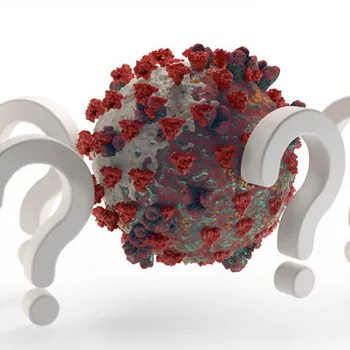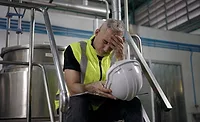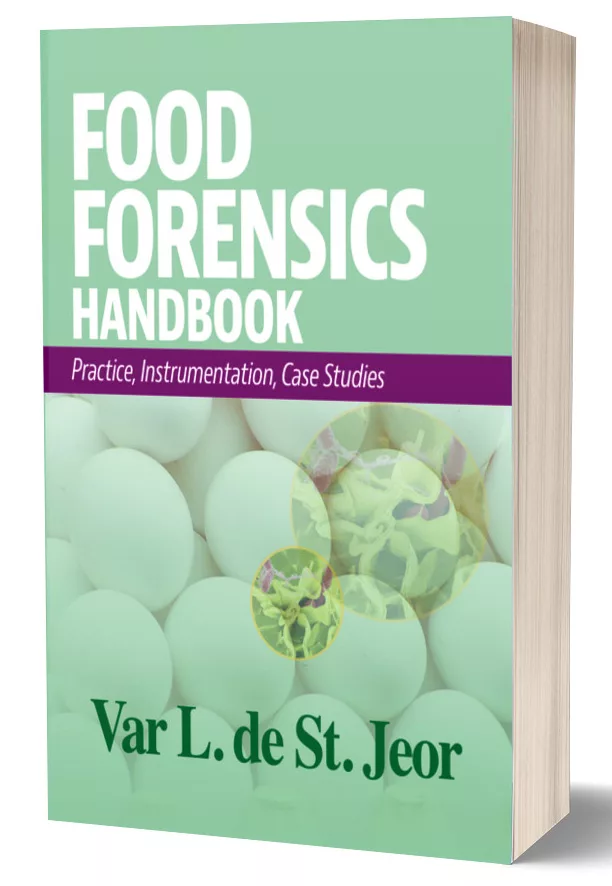You’ve got a COVID-19 Case in Your Food Processing Plant…Now What Do You Do?

The coronavirus disease (COVID-19) continues to expand across the United States and the globe. The news of late has not been good and is likely to become much worse before it becomes better. The timeline estimations vary widely. Modelers working for private organizations, business consultants, the government, and military are producing mortality and morbidity estimates, ranging from 100,000–200,000 deaths to a million plus deaths. The important thing to remember is that these estimates purposely vary by design. Rather than ignore the vast discrepancies in the numbers and thinking they are nothing more than guesses, it is important to understand how models are created and utilized. If you are not familiar with the process, the results can certainly be puzzling.
Models are, in essence, a series of mathematical formulas that are incorporated into a computer program. Modelers, the people responsible for their creation, use the mathematical formulas to try to factor in all of the inputs that may influence something happening in the real world. For example, a population of individuals might not be vaccinated for seasonal influenza. The formula is built so that the inputs influence what happens in the hypothetical population. What happens if that population is exposed to one person with influenza…two people…50 people, etc.?
Models are constantly adjusted as new data become available, and in the case of the COVID-19, the amount of information being developed around the world is massive. Modelers are very busy factoring in new data, frequently multiple times every day. This makes the model change, sometimes subtly, sometimes very dramatically. Modeling results will therefore change over time. It is important that they do, as stale (i.e., old) data can often lead to wrong conclusions—wrong outputs in the model.
Why this long explanation about models? Models are only as good as the information and the assumptions being used. The old adage about computer programs, “Garbage in—garbage out” is very apropos to modeling, because models are mathematically based computer programs. What is the take-home message? Don’t discount the information they provide when making business decisions but always include the caveat in your analysis that this is a snapshot estimate subject to change. One approach to avoid making the wrong business decision is to avoid dependency on a single model. The best business practice is to look for the trends emerging from the preponderance of modeling information.
As microbiologists, we are always very busy looking at a lot of models. Of late, more than 90 percent of those are COVID-19 models. What trends do we see? Writ simply, the overarching trend is that the rate of COVID-19 new infections will continue to escalate short to middle term. If you haven’t had a case within your plant personnel, you will so eventually. The other trend we are seeing is that the estimates of the number of infected but “symptomless” cases (carriers) is increasing in most every model.
Putting the two modeling trends together, it appears highly probable that you have in fact had COVID-19-positive—but symptomless—individuals in your plant already. The likelihood of these “stealth cases” increases with the number of individuals present in the plant, or warehouse, or retail food outlet.
This is no reason to panic—the situation is what it is. The number of people exposed, the number of symptomless carriers, the number of sick people are all for the time being going to increase. Confirming that is the related trend that most people now know at least one individual who is or actually has been sick with confirmed or suspected COVID-19.
How Do We Keep Producing Food That Is Safe?
The first thing to remember is that Covid-19 is a respiratory virus, and there has been no evidence to date that indicates that it could be transferred via food consumption. Any individual infected with the novel coronavirus sheds the viral particles in droplets expelled from their respiratory tract during coughing and sneezing. Preliminary research shows that the virus can survive on contact surfaces for several hours or even days, depending on the surface material. The infected worker could then be a source of contamination to other contact surfaces in your facility or to packaging materials. For that reason, the first step is to send the infected worker home to self-isolate and seek medical attention. Better yet, the goal should be to keep that infected worker out of the food processing plant in the first place.
When strategizing, consider that you will have two types of cases: those who are obviously sick and those who are stealth cases. The term “stealth cases” is not pejorative; we’re not implying that people are intentionally hiding the fact they are sick, which is impossible with a full-blown case. We use the term to refer to that low percentage of workers who are symptomless and don’t know they are infected but nevertheless are actively shedding virus.
How do you detect the stealth cases? Many (and soon probably most corporations of any size) are implementing screening programs, where employees are not allowed on the premises without first having their temperature taken. Fever is one of the indicators of COVID-19. Even an elevated or low- grade fever is an indicator warranting further investigations. Companies are also asking employees, often at the gates or the entrances to parking lots, whether they have had or are experiencing head or body aches. If any of these indicators are present, the individual is sent home and told to contact their medical provider and ask for instructions. Personnel in either of these categories are not allowed back into the plant until medically cleared.
As an employer, you have a responsibility for the safety not only of your customers but also of your employees. For this reason, it is important to inform other employees that they were potentially exposed to the virus while still maintaining the confidentiality of the infected individual. An evaluation of work areas to which the individual had access should be conducted immediately, followed by thorough decontamination of those areas. Although the primary consideration should be the altruistic one of keeping employees safe, there is also a pragmatic outlook.
More workers can become sick if employees are not informed of potential exposure and decontamination procedures are not undertaken to ensure that transmission through common contact surfaces is decreased. Each infected worker is a potential vehicle of transmission to additional employees and is one more employee who will not be able to work. If left unchecked, the virus could decimate your work force, leading to a decrease in productivity or even closure of the facility.
Showing employees that their safety is paramount to the company and management is important. If employees do not see these measures taking place, they may feel unsafe, leading to an employee walkout, such as a poultry processing plant recently experienced.
As a food processor/producer, you may also wonder what to do with products produced in the facility while an infected employee was present. Again, there is no evidence at present that the virus can be transmitted through food. For that reason, the U.S. Food and Drug Administration (FDA) has recommended that products made in a facility with a worker who has tested positive for Covid-19 do not need to be recalled from the market. If there are questions, ask the inspectors who work with your facilities. FDA and the U.S. Department of Agriculture are updating information almost daily. If your inspectors can’t answer your questions, ask them to contact their agency.
In general, additional vigilance to worker health and decontamination of surfaces is necessary, but the regulations and common practices of the modern food production system include measures designed to control the risks of microbial pathogens, including those that can be transmitted by food handlers. These already existing measures will help reduce safety risks to consumers.
Beyond that, everyone needs to remain calm. Although, the COVID-19 pandemic remains very prominent, there is some good news likely in the future, as many novel medication treatments are being tested. In the coming weeks and months, FDA will allow many combinations of drugs already proven safe. A combination or cocktail of medications will likely be the approach for many patients, but each case will have to be evaluated.
Numerous vaccine trials are also currently underway. If all goes well, we will likely see “experimental vaccines” available in limited quantities sometime during the fall of this year. It is not likely there will be enough vaccines by the fall for everyone, but there is hope that the necessary vaccinations (tens of millions in the U.S.) will be available by the end of the first quarter in 2021, or perhaps a bit later. In the meantime, the number of immunologically more-resistant individuals, meaning those who have successfully transitioned through the viral infection, will also be increasing. Combined, these elements will help slow the number of new cases.
That being said, this virus will be with us for a long time, likely becoming seasonal like influenza. This year was a perfect storm in that COVID-19 overlapped with influenza during an already tough flu season. The combination of two tough pathogens is not unknown (though fairly unusual), but may become more common if globalization continues at the recent rate. We don’t really know what we will find on the other side of this pandemic, but rest assured that we as an industry and we as a nation will survive and once again prosper. There will be tough days ahead, some very tough, but there always have been. In those times we adapted, improvised and overcame the obstacles. We will so again.
Robert A. Norton, Ph.D., is a microbiologist and professor in the Department of Poultry Science at Auburn University who consults widely on food defense. He can be reached at nortora@auburn.edu. Emefa A. Monu, Ph.D., is an assistant professor of food microbiology in the Department of Poultry Science at Auburn. Her current research focuses on alternative intervention methods to reduce bacteria and fungi in food, including the development of natural antimicrobials from plant and bacterial sources and the utilization of novel non-thermal processing techniques. She can be reached at eam0063@auburn.edu.
Looking for quick answers on food safety topics?
Try Ask FSM, our new smart AI search tool.
Ask FSM →








